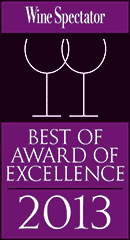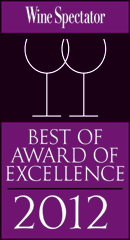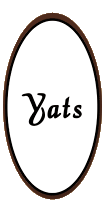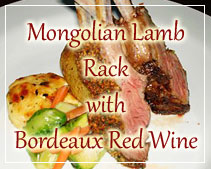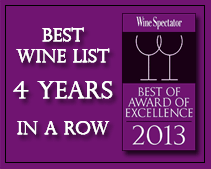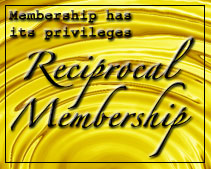Champagne Wine Guide
MARCH 23, 2011
The morning began – after breakfast of course – with a drive along the N51 which carves a route through the trees that sit atop the Montagne de Reims. We left our base in Reims at around 8:30am, and it was not long before we arrived at our destination, a vineyard overlooking the town of Aÿ on the southern slopes of the montagne. The slopes were already a hive of activity; parked adjacent to the vines was a large motor coach – looking very incongruous on this wide but very rough and uneven stone track – which had recently spewed its human cargo out amongst the vines. Having been equipped with buckets and secateurs, unloaded from a nearby van, the workers were moving quickly along the rows, half-bent, half-crouched, their buckets gradually filling with bunches of deeply-coloured blue-black grapes, all Pinot Noir. I was in Champagne, and it was harvest time.
In one certain fashion this was a very new experience for me. Although I have visited many wine regions, and walked in many vineyards, I have always avoided visiting at harvest time. It is a time of intense activity in any vineyard, a defining point in the process of making wine. It is a time when a year (or maybe longer) of planning, worry, effort and work comes to an end with the removal of the fruit from the vine, and a new chapter opens as the fruit enters the winery ready to start the marathon process – and it is something of a marathon, in Champagne – that sees it transformed into a finished wine. It is not a time when visitors are usually welcome. Larger wineries may be operating on a 24-hour day, manned by shift workers, whilst in smaller domaines populated by fewer staff long hours mean they are tired and have more tasks than time. An impromptu tasting with an unexpected visitor does not provide a welcome distraction. This was different though; this time I was welcome, and indeed was to be part of the harvest team…even if for just a very short while.
I took hold of a bucket and secateurs and made my way into the sea of vines; even though it was mid-September they were still verdantly green, and I was soon hidden from view crouched amongst the vines. My bucket was unremarkable, black plastic, like a thousand other buckets piled up for sale at any DIY store. The secateurs, though, were something else. They were small and seemed flimsy in the hand; the handles were slim, fashioned in a slight curve, and covered in a thin coating of rubber. They were a world apart from the last set of secateurs I had seen in a vineyard, in Bordeaux, when the winter pruning was being undertaken using sturdy, electric-powered mini-shears. I was grateful that I wasn’t to be picking all day, as this flimsy tool looked set to inflict hand cramp with anything more than a few squeezes; I could see it transforming from useful device to instrument of torture within a very short space of time. Nevertheless, undeterred, I moved up the row, carefully snipping bunches of Pinot Noir away from the vine. To say I was slow would perhaps be an understatement, especially if comparing my progress with the professionals. On the opposite side to my row one such worker moved past, a flurry of activity, leaves flying from the vine, the grapes falling into his bucket. Such was his speed I gave him plenty of room, for fear that his bucket would also receive my fingers, bringing a new dimension to ‘matter-other-than-grapes’, or ‘MOG’ as it is sometimes known.
My contribution to the 2009 Champagne harvest was just half a bucket, nevertheless it was half a bucket picked with care, attention to detail and, dare I say it, love? I will be looking out for the wines when they are released, keen to see whether my contribution made any difference to their quality. Naturally, I am anticipating that the answer to this question will be yes. Just don’t ask me to test this conclusion in a blind tasting!
Why Champagne?
Champagne has an enviable position in the global wine market. As with any region of the Old World it is easy to argue that the wines have a unique style, and as with any other region there are many imitators worldwide, winemakers inspired by the produce of the vineyards that lie just to the east of Paris. But there have been no real successes, no regions or winemakers stepping up to challenge the supremacy of Champagne, whereas that is not true of other classic styles such as Bordeaux or Burgundy. With the former, there are many areas of the world where Cabernet Sauvignon and Merlot have been successfully cultivated, the wines and regions developing a name and reputation in their own right. There are great examples coming from Bolgheri in Tuscany, for instance, or from the Napa Valley in California, and what variety do we naturally associate with Coonawarra in Australia other than Cabernet Sauvignon? It is the same for Burgundy and Pinot Noir; few would argue that there is a region which threatens to usurp the predominance of the Côte d’Or, but similarly there are few that would deny that the variety in question is grown successfully in some regions of California, and it is on Pinot Noir that the international reputation of New Zealand’s Central Otago has been established. Which region of the New World springs to mind when searching for a sparkling wine, which domaine, which winemaker? There are certainly some that provide a niche interest for the enthusiast, but none that have entered our collective consciousness as being broad sources of excellent sparkling wine to rival Champagne.
There are, of course, other regions of Europe which turn out some excellent sparkling wines. No doubt some will raise the flag for Spain’s Cava and Germany’s Sekt, or perhaps even the wines of Asti or Prosecco from Italy, but it is to more esoteric regions of France that I would look first. Limoux is one such appellation, an unlikely pocket of sparkling wine made from Mauzac, Chardonnay and Chenin Blanc at the western end of the Languedoc vineyard. And Vouvray, a wine and appellation familiar to these pages, is another. Here, although the reputation of the appellation rests largely on the still and perhaps sweet wines of a handful of producers, a large proportion of the region’s output – the majority share, in fact – goes into sparkling wine. Much of it is of questionable quality, but there are some domaines turning out superb wines.
The Champagne snob will, of course, reject these wines out of hand. They are Champagne substitutes, he (I have decided this snob is male) will say to himself, and not very good ones at that. When he has cause to celebrate, he reaches for Champagne. It is not the ‘Limoux Lifestyle’ that he leads, and he is not a ‘Vouvray Charlie’. For him, it is Champagne, first and foremost. In some respects he is right of course, but only in the same way that a bottle of Pommard would be a poor substitute for somebody craving a wine from Pomerol; the style is inherently different, but that does not mean it is inherently inferior. I confess that I was once a Champagne snob, disregarding wines from other regions simply because they were made to a different tune, having been suckered by the Champagne marketing machine, and failing to appreciate that a difference in style did not equate to a difference in quality. It is misguided opinion such as this that keeps Champagne at the pinnacle of the sparkling wine world, and leaves other producers of some very fine wines scrabbling for a piece of the action in the valleys below. Fortunately, I have long since seen the error of my ways, and today I am just as likely to open a bottle that originated from the Loire, be it a Vouvray, Saumur or even a vin de mousseux de qualité from a feted Muscadet producer, or perhaps something from Limoux, as I am a Champagne, and each style is appreciated for what it offers.
But for now let us focus on Champagne, the world’s only wine region dedicated entirely (well, almost entirely) to a sparkling product, and one that is most certainly worth exploring in as much detail as is possible. This guide covers every aspect of the region and its vinous produce, from the vineyards to the finished wine. It is a little different from many of my other regional wine guides, all of which tend to have a very geographical, region-by-region approach. Such a system would not, I think, work quite so well here, in a region where local identity is often confused by broad blending from many different sites. That is not, however, to disregard the importance of regionality in Champagne, or indeed of terroir, and I cover these issues in my sections on the Champagne region and villages. It is just that the wines themselves demand a deeper discussion of the intricacies of how they are made than is required by my other guides, as the process is both fascinating and unique, and shrouded with a little more mysticism than is usual. That’s the Champagne marketing machine at work again.
SOURCE: http://www.thewinedoctor.com/regionalguides/champagne.shtml
Foodies and wine lovers travel north from Manila to wine and dine at Philippines’ best fine dining restaurant in Pampanga Clark Freeport worth the 60-minutes drive for a memorable evening of good food with vintage wine at Yats Restaurant & Wine Bar
This fine dining restaurant is also famous for its low carbohydrates “low carb” dishes highly recommended for frequent diners who are on a low fat food and favor healthy food. This is a unique restaurant that can help frequent diners maintain a healthy diet and enjoy delicious fine dining cuisine at the same time. Vegetarian dishes are a specialty here also and so are “halal” cuisines also.
Favorites of frequent diners, foodies and wine lovers are steaks, Wagyu, Foie Gras, lobsters, venison, kangaroo loin, osso buco, veal chops, Kurabuto pork, escargots and a good selection of cheeses to enjoy with fine Vintage port and Sauternes. Cuban cigars such as Monte Cristo, Cohiba, Upmann, Partagas, Romeo Julieta and Trinidad are also available in the Magnum Room which is a wine bar and lounge for before and after dinner relaxation. A good selection of Armagnac, Cognac, Single Malt, Vodka and other liquor is served in addition to the wine vintage wines some served by the glass.
Recent opinion survey of frequent travelers heading north towards Subic and Clark Pampanga revealed that the number one most frequently visited fine dining restaurant in Pampanga is Yats Restaurant & Wine Bar located in Clark Philippines.
Inquiries and reservations
Restaurant@Yats-International.com
(045) 599-5600
0922-870-5178
0917-520-4401
Ask for Pedro and Rechel
Getting to this fine dining restaurant of Angeles City Clark Freeport Zone Pampanga Philippines
How to get to this fine-dining restaurant in Clark Philippines? Once you get to Clark Freeport, go straight until you hit Mimosa. After you enter Mimosa, stay on the left on Mimosa Drive, go past the Holiday Inn and Yats Restaurant (green top, independent 1-storey structure) is on your left. Just past the Yats Restaurant is the London Pub.
http://www.youtube.com/watch?v=5u5vLLIlNgw
Yats Restaurant & Wine Bar
Mimosa Drive past Holiday Inn, Mimosa Leisure Estate,
Angeles City Clark Freeport Zone, Pampanga, Philippines 2023
Manila Sales Office
3003C East Tower, Phil Stock Exchange Center,
Exchange Rd Ortigas Metro Manila, Philippines 1605
(632) 637-5019 0917-520-4393 Rea or Chay
For assistance in hotel and resort booking in Clark, Philippines, log on to http://www.HotelClarkPhilippines.com
For assistance in locating a suitable venue for wedding reception, log on to
http://www.PhilippinesWeddingVenue.com
